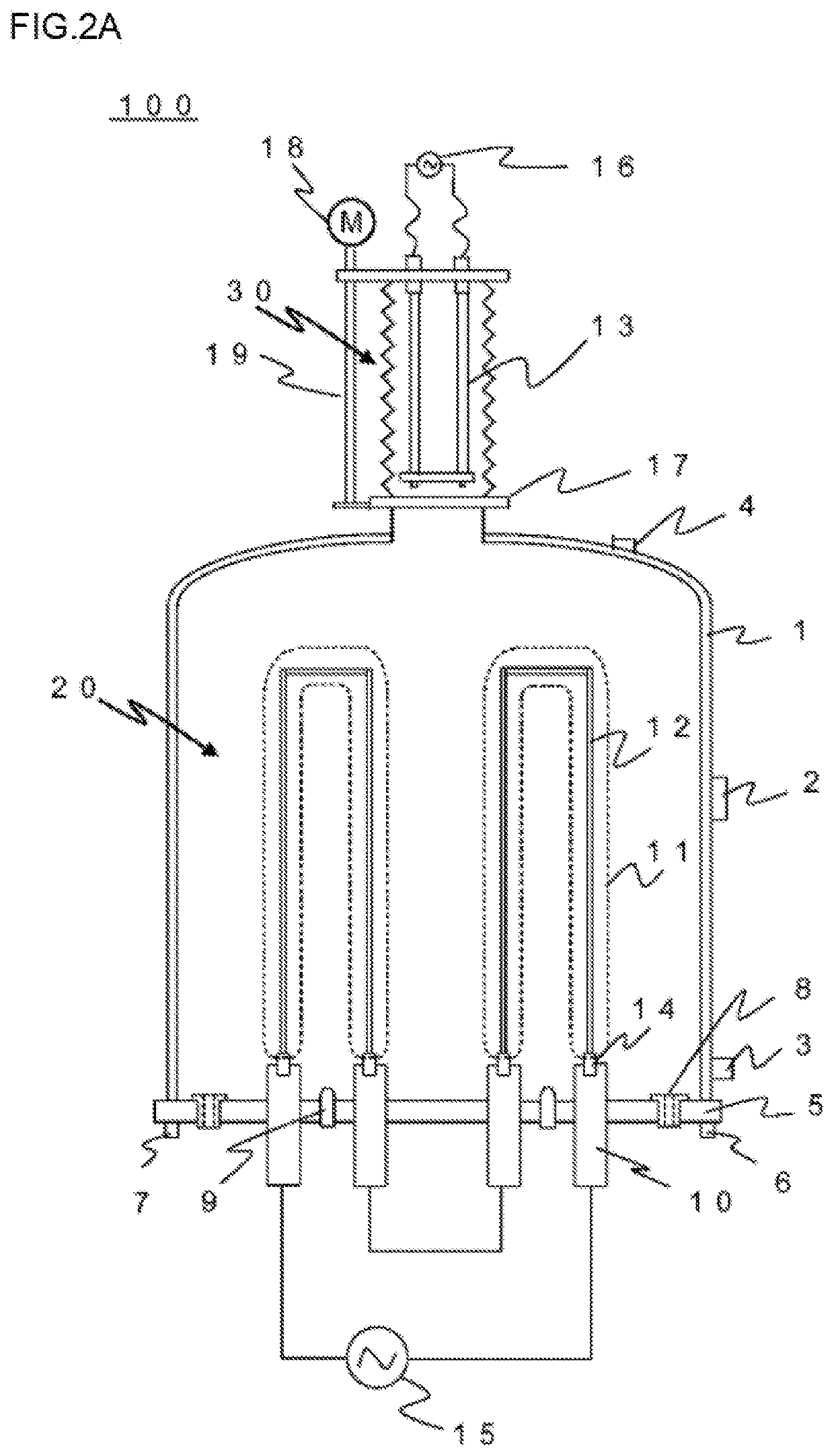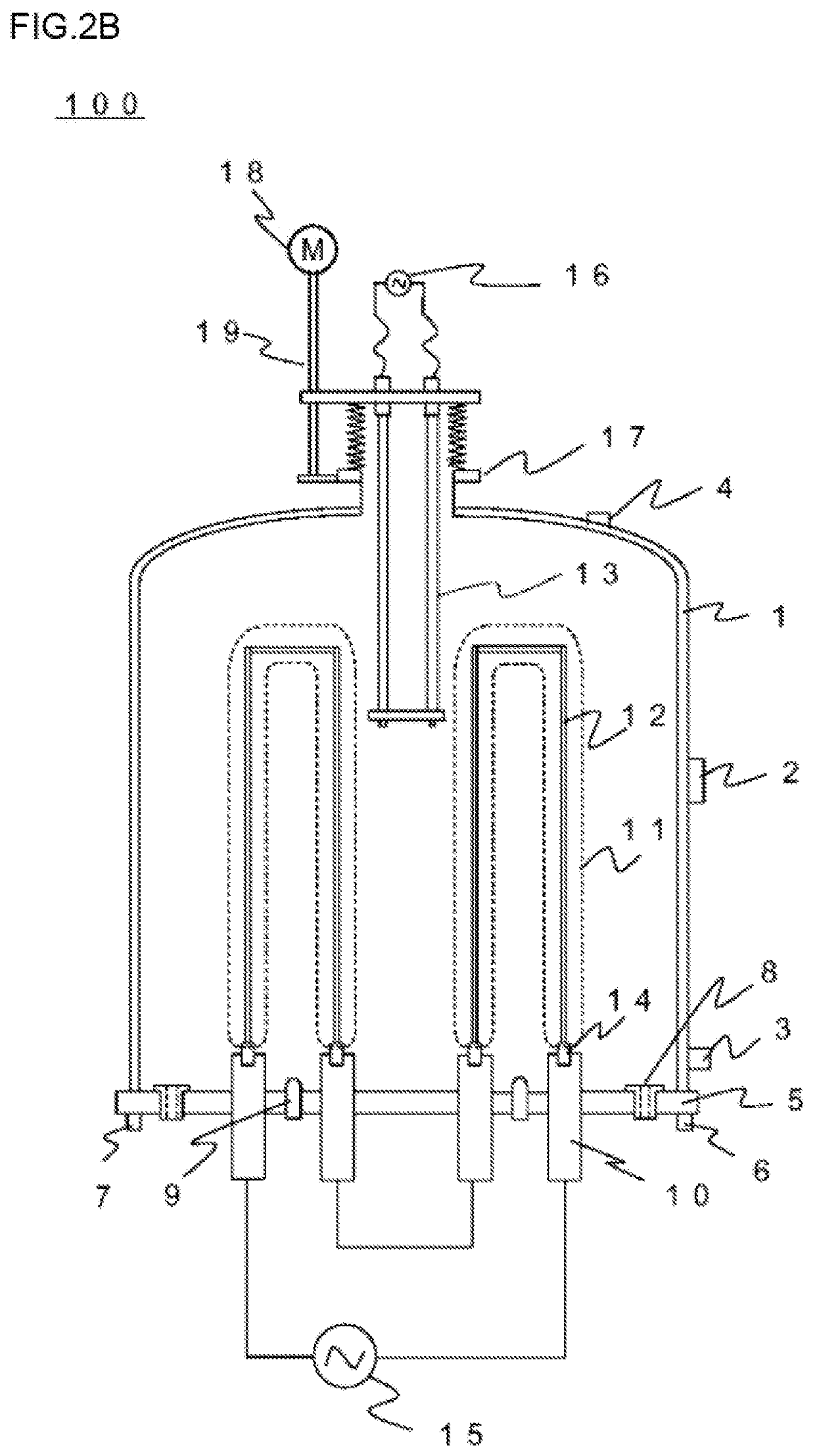Method for producing polycrystalline silicon
a technology of polycrystalline silicon and siemens method, which is applied in the direction of silicon compounds, coatings, chemistry apparatus and processes, etc., can solve the problems of severe environmental exposure of the heater, heater deterioration, and carbon contamination in the polycrystalline silicon produced by the siemens method, and achieve high efficiency, high quality polycrystalline silicon, and reduced carbon contamination.
- Summary
- Abstract
- Description
- Claims
- Application Information
AI Technical Summary
Benefits of technology
Problems solved by technology
Method used
Image
Examples
examples
[0058]In the present example, in the case where polycrystalline silicon was deposited using a reactor having a structure shown in FIGS. 2A to B, (a) the concentration of methane contained in exhaust gas during reaction and (b) the concentration of carbon contained in grown polycrystalline silicon were measured (Example: batch 1). For comparison, in the case where polycrystalline silicon was grown using a reactor having a conventional structure shown in FIG. 1, (a) the concentration of methane contained in exhaust gas during reaction and (b) the concentration of carbon contained in grown polycrystalline silicon were also measured (Comparative Example: batch 2).
[0059]FIG. 3 is a graph showing the deposition reaction time dependency of a CH4 concentration in the exhaust gas. With respect to Example, the methane concentration in the exhaust gas were equivalent to or lower than the lower detection limit (less than 0.100 volppm) through the deposition reaction step (72 hours). In contrast...
PUM
| Property | Measurement | Unit |
|---|---|---|
| temperature | aaaaa | aaaaa |
| temperature | aaaaa | aaaaa |
| pressure | aaaaa | aaaaa |
Abstract
Description
Claims
Application Information
 Login to View More
Login to View More - R&D
- Intellectual Property
- Life Sciences
- Materials
- Tech Scout
- Unparalleled Data Quality
- Higher Quality Content
- 60% Fewer Hallucinations
Browse by: Latest US Patents, China's latest patents, Technical Efficacy Thesaurus, Application Domain, Technology Topic, Popular Technical Reports.
© 2025 PatSnap. All rights reserved.Legal|Privacy policy|Modern Slavery Act Transparency Statement|Sitemap|About US| Contact US: help@patsnap.com



